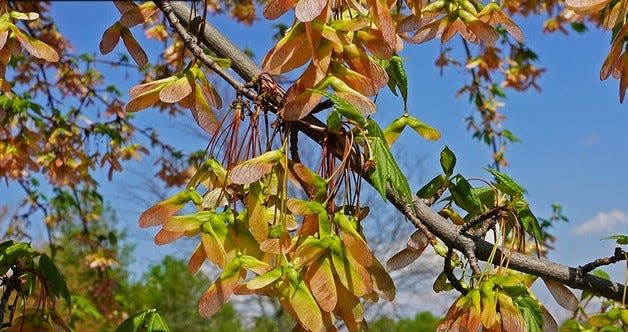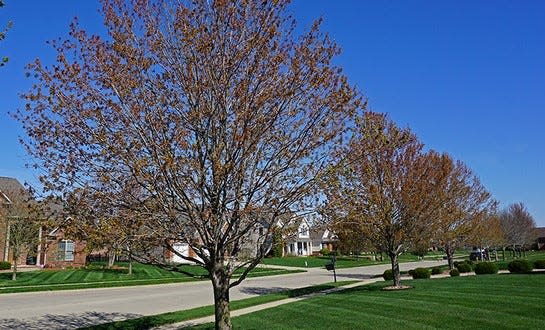Garden: No cause for alarm with seedy maples
Many homeowners and tree huggers in Greater Columbus are expressing concern about the health of several species of maples in the landscape, particularly mature trees.
The leaves of several species of older maples have not yet fully expanded and appear to be stunted. The canopy of some of these trees appear to be more brown than green in color, causing alarm about the health of these trees.
Some homeowners have also reported an unusually large number of seeds or samaras on many maples helicoptering down to the ground completely covering patios, decks and sidewalks. Both observations are related and seem to be due to an unusually large seed set on some maples this spring.
Garden: Spring has sprung, and so have the upcoming garden events

Heavy seed set
While a thinning maple-tree canopy can signal serious tree-health issues, such as vascular wilt diseases or severely girdled roots, it is unlikely that one or more of these tree-health issues would have become so widespread in Greater Columbus this spring. The same conditions have also been reported on maples in the Cincinnati area this spring.
Several species of maples, including red and silver maples, are known to shift energy to support heavy seed production at the expense of leaf development and expansion in some years.
When this happens, the leaves take more time to fully expand and mask the tan-colored seeds as they mature. The abundant number of tan-colored seeds in the canopy of the tree give the canopy a brown appearance, making it look as if the leaves are brown and dry instead of green and growing.
While the incidence of heavy seed set among maples is not completely understood, it seems to occur in years when a killer freeze fails to occur in late winter and early spring.
The warmer-than-normal late winter and early spring experienced throughout Ohio seems to support this hypothesis, as the warmest April on record was recorded this year at John Glenn International Airport.
Garden: Why No Mow May is a no-go
Seed set differs by species
Exactly when in spring maple leaves fully expand and cover the brown color of the seeds attached to the tree depends on the maple species. The timing for seed production and full leaf expansion varies widely among maple species in Ohio, with red maples being the first to bloom, followed closely by silver maples.
Sugar maples are typically the last maples to bloom in Ohio. This explains why red and silver maples are the species which seem to be the first to appear brown and sickly during a spring when heavy seed set occurs.
Maples should quickly green up
Heavy maple seed production is a natural event which in the forest assures the survival and expansion of the species. This natural phenomenon will be visible in the coming weeks in flower beds, vegetable gardens, home landscapes and even rain gutters throughout Greater Columbus as hordes of fallen maple seeds germinate!
Maples with canopies which do not green up with full-leaf expansion by late May could be the result of a tree-health issue as opposed to heavy seed production. Such trees should be evaluated by a certified arborist to determine the cause of the decline.
If decline of a maple canopy has been seen over a number of years, it may be due to the fact that the wrong tree was planted in the wrong place. Sugar maple rarely thrives in poorly drained soils. Red maple (sometimes called swamp maple) can thrive in poorly drained soils, but will not thrive in highly alkaline soils common to many areas in Greater Columbus.

When planting new trees in the home landscape, always be sure to match site conditions to specific requirements for different species of trees.
Mike Hogan is Extension Educator, Agriculture and Natural Resources and associate professor with Ohio State University Extension.
hogan.1@osu.edu
This article originally appeared on The Columbus Dispatch: Garden: Maple leaves can fully expand this spring
